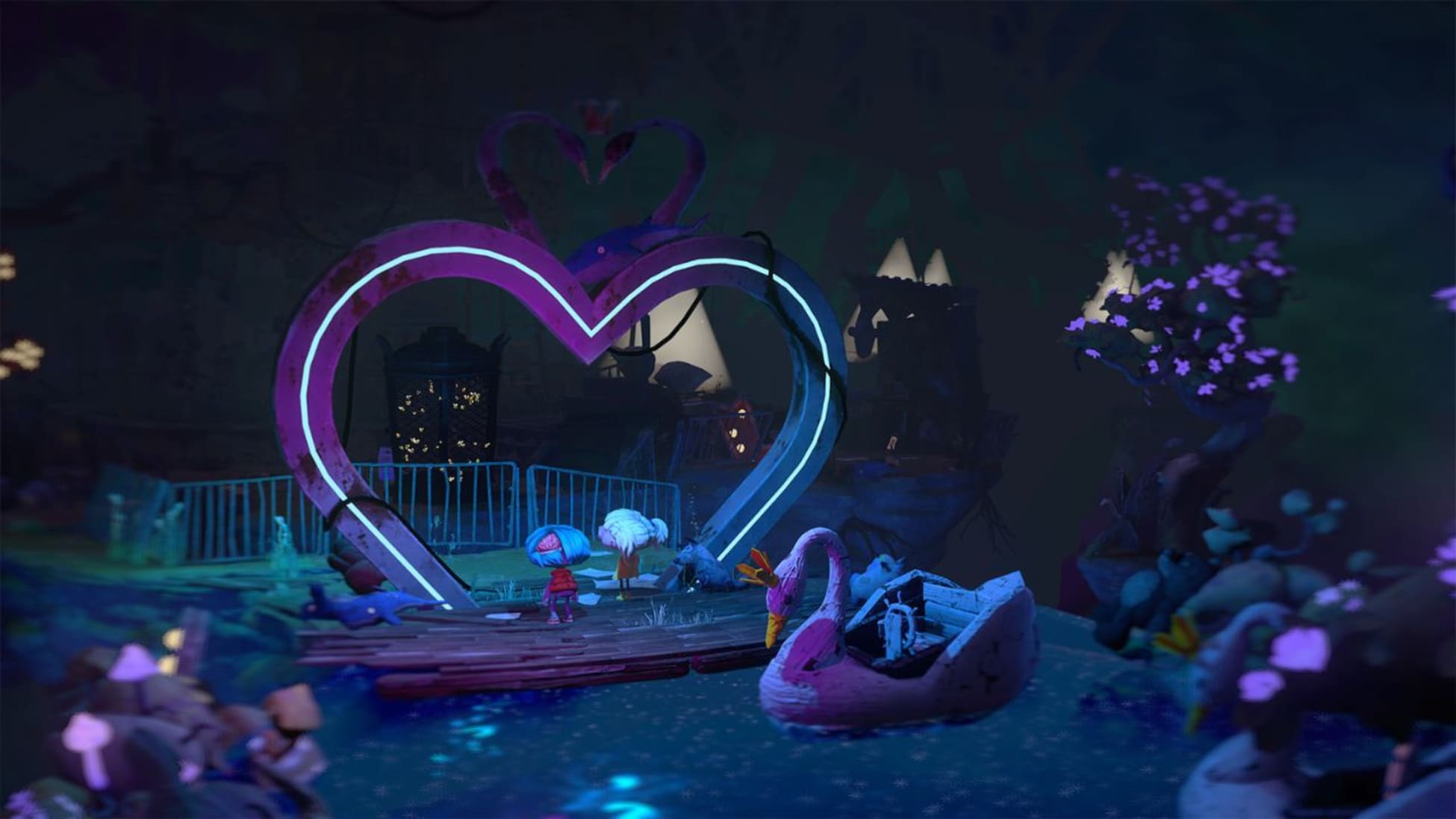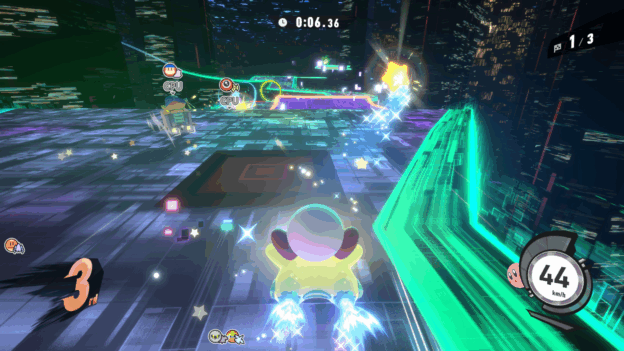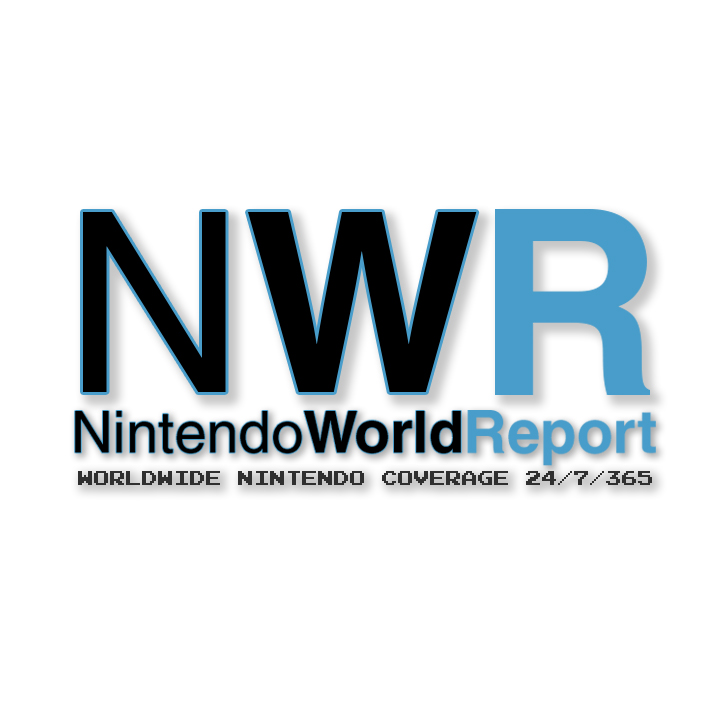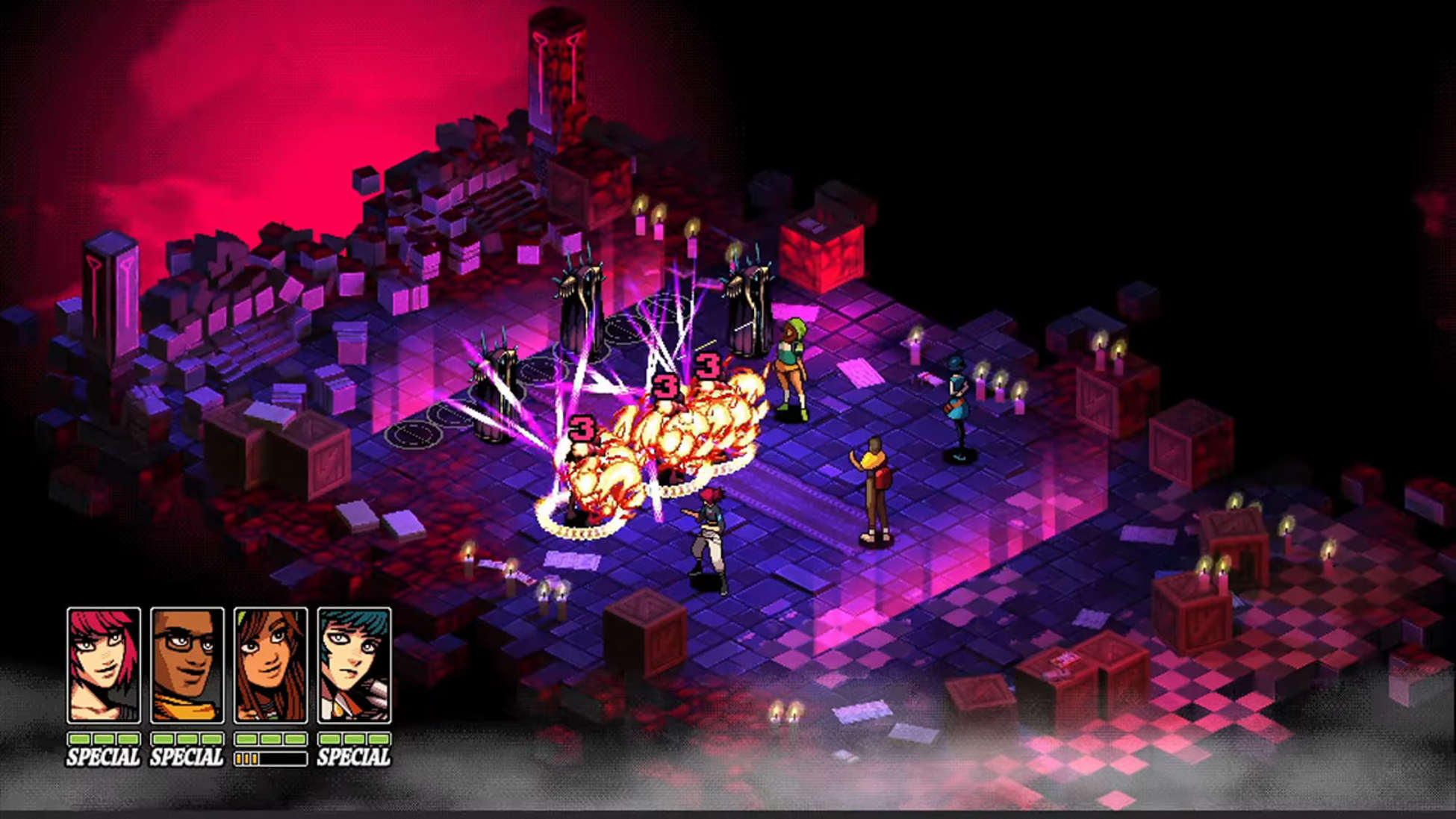Hands-On with Switch 2: Hardware, Mouse Controls, Game Impressions, and more
For the first time in a long time, we’ve got a brand new Nintendo console to talk about! Just a few days ago, we knew almost nothing about the Switch 2, and now we’re being inundated with details left and right. It’s a lot to process in such a short period of time!
I was lucky enough to get some early hands-on time with the Switch 2 and its games at the Switch 2 Experience event in New York City this week. If you watched the Switch 2 Direct, then you have a pretty good idea of what was shown off here already. Virtually everything that was included in that presentation was on display at this event. That includes many titles that will be available at launch, or shortly after. Nintendo clearly came prepared with the Switch 2, and I can’t wait to dig into everything they have to offer.
There’s been a fair bit of skepticism about the Switch 2 in recent days, primarily surrounding its pricing. Now we’ve learned that the pre-order period is being pushed due to uncertainty about US tariffs. Who knows what will change in the next few weeks? For now, I’m going to focus on my experiences with the system itself and the games I got to play, and you’ll have to make your own determination about the system’s value. Keep reading to hear about my experience with the console and how it’s shaping up to deliver in terms of controls, power, and gameplay experiences.
First things first – the Switch 2 looks great, and it feels great in your hands. Right away, the size difference from the original Switch is impossible to miss. I’m not someone who ever upgraded to the Switch OLED, so for me, the much bigger screen is a major change. It’s going to be so much easier to get wrapped up in a game while playing in handheld mode, as the Switch 2 just takes up so much more of your vision.
It’s going to be easier to play in tabletop mode as well. With the original Switch, I engaged with tabletop mode, a handful of times, but it never felt like an ideal solution. Especially with multiple players, it was just always preferable to get ahold of a dock and a TV if possible. With the Switch 2, I could genuinely see that changing. The screen is very clear, and very easy to see from different angles. The back stand is a massive improvement over what was there before. It takes a little bit of pressure, but you can pull it out easily and adjust it to suit whatever angle you need. The dream of playing split-screen Mario Kart with a buddy at the park or on the kitchen table might actually be a reality for me soon.
To put it simply, the Switch 2 looks and feels like a premium product. I was never really disappointed by the make of the original Switch, but this makes it feel like a toy in comparison. It’s heavier, and sturdier in the hands (although it should be a bit lighter when it’s not bolted down to a demo kiosk).
Your mileage may vary, but the larger Joy-Cons feel perfect for my hands, and should be plenty comfortable for longer periods of play. They also feel better when in the Joy-Con grip. Don’t get me wrong, the Pro-Controller is still going to be the preferred method for most serious gamers, but if you don’t feel like dropping an additional $80 right away, the Joy-Cons in the grip will last you longer than you might think. They’re not ideal, but they’re perfectly serviceable.
The new Pro-Controller on the other hand, is what I would call ideal. While its size and shape haven’t changed from the previous iteration, it now comes equipped with the new Switch 2 buttons (plus bonus back buttons), HD Rumble 2, and all the rest. I think this one will definitely stand up as one of the best, most reliable options for general gaming in years to come.
The detachable Joy-Cons now come on and off using magnets, and the process is a breeze. I was a little concerned that they might feel flimsy, or that I would feel like I was going to break something while snapping them in and out. I also had some worried that they might fall out by themselves if I wasn’t careful. Thankfully, I can report that none of that is the case.
To remove a Joy-Con from the side, you just hold down a small button, and it pops out easily. Then, you can pop it right back in just by inserting it into the slot. A Nintendo rep recommended inserting it from top to bottom as the easiest method, but it should work either way. We may have lost the satisfying ‘click’ of the Joy-Cons sliding into place with the original Switch, but it’s a small price to pay for the simplicity and ease of use of this new design.
In every conceivable way, the Switch 2 is simply a straight upgrade from the first model. It’s bigger, sturdier, and nicer to look at. This really feels like a premium piece of hardware, something that can easily stand alongside the Steam Deck and hold its own against it in terms of look and feel. Past Nintendo consoles have sometimes felt like they sacrificed that kind of appeal for affordability, but that’s not the case here. This is the complete package.
The only major trade-off I can think of is that because of the bigger size, the Switch 2 is now a good deal less portable than the first. There’s absolutely no chance you’re fitting this thing into any size pants pocket; It’s going to require a purse, messenger bag, or backpack. The original Switch was pretty nearly at that stage anyway though, so unfortunately I think this battle was lost years ago for true handheld purists. Even if you do miss the days of popping a DS into your pockets with ease though, I think it’s hard not to come away impressed after holding the Switch 2 in your hands.
Let’s face it, the Switch 2 is an upgraded Switch from just about every angle. With the exception of the new Joy-Con mouse controls (which we’ll get to), there aren’t any over the top innovations on the level of the Wii remote or the DS’ dual screens. That means that Nintendo is really relying on their new game lineup to sell this system. With that in mind, let’s talk about its biggest titles so far.
The most high profile games that Nintendo showed off were its own brand new first party offerings: Mario Kart World and Donkey Kong Bananza. These games are so big that I needed separate articles to do them justice! Go ahead and click below to get my full impressions on both.
If you’re sticking around, or if you’re coming back after reading about those games, then you’ll get more in-depth thoughts on the Switch 2 itself, and how different titles take advantage of the new hardware. Those Joy-Con mouse controls are the biggest, flashiest new controls to speak of, so let’s kick things off there.
My first time trying out the new mouse controls came when trying out Metroid Prime 4: Beyond. You’ll be able to control Samus using either traditional controls, or mouse controls. Traditional controls are what you’d expect – The right joystick controls the camera, the left joystick controls your movement, etc. With mouse controls, you’ll turn the Joy-Con on its side and hold it flat on a surface in front of you. Moving the Joy-Con like a mouse will control your aiming cursor, while you continue to hold the left joy-con in your hand just like you normally would. Trigger buttons still shoot, etc., and everything operates as you’d expect, with the exception of your aiming being handled by the Joy-Con mouse.
What really blew my mind about this setup is that you can switch between the two control settings on the fly. There’s no need to navigate away to a menu, or even press a button. Simply lift the Joy-Con up, and it will work like a normal controller. Set it back down again, and it will immediately register that you want to use it as a mouse. It works smoothly and seamlessly. This is a great option for moments where you want a more precise aiming capabilities, or if your wrist gets tired and you just want to flex a little without stopping the game.
In my experience, the mouse controls were solid, but they didn’t fully click with me right away. The Joy-Con isn’t nearly as wide as your average mouse, so it didn’t fit quite as comfortably in my hand when turned on its side. My brain also had a few hiccups in regards to aiming and shooting properly in this mode. Maybe it’s because I’ve only played Metroid Prime games with a traditional controller before, but the joystick movement felt more natural to me in the moment. It probably also didn’t help that I was actively testing to see the differences by swapping quickly back and forth, instead of going all in on one mode or the other.
Other than that, I didn’t experience any lag or lack of precision, and given the right environment it seems like this control option will function exactly as advertised. I definitely plan on giving it more time at home to see if it gels together for me in the end (and to see how well it works on pants).
Something that I didn’t expect from Beyond was how much advantage it took of the new HD Rumble 2 functionality. This honestly wasn’t a feature I was really anticipating much at all, assuming it would be more or less the same as the HD rumble in the original Switch Joy-Cons. Well, I was wrong! I don’t want to overhype it or anything (it’s still just a fancy rumble), but man, those controllers sure were vibrating the heck out of my hands during that Metroid Prime demo. I could feel every thrust of my ship, and the shots from my blaster, as well as my missiles, all of which had a slightly different feel from the other. Initially, I couldn’t stop freaking out about how powerful the rumble was during a big action cut scene. I don’t know, maybe this is just me, but I came away really impressed with it. I think that Nintendo definitely did up the ante from the HD Rumble tech that was in the old Switch controllers.
The game itself was classic Metroid Prime gameplay as you’d expect. You’ll scan. You’ll shoot. You’ll morph into a ball. Space pirates will look up and take one final, desperate shot at you before they die. You’ll roll through vents while crazy action scenes take place beneath you.
The section I played was a more linear one, with more Corruption-style dialogue from various NPCs. It all culminated in a boss fight with a big guy fused with Metroids, which provided a good challenge and a test of my skills with the Joy-Con mouse especially. Beyond still remains very high on my list of anticipated titles, but I don’t feel like this particular demo scratched the surface of what the full game will contain.
Another big area where the Joy-Con mouse controls came into play was with Nintendo’s brand new IP, Drag x Drive. This game puts you in a motorized wheelchair for a game of 3 on 3 hoops. You control your movement entirely with both Joy-Cons in mouse mode simultaneously. Drag them both forward at the same time to move, and drag just one at a time to turn left or right.
With Drag x Drive, you aren’t using traditional mouse controls as you might expect, as there’s no cursor on screen. Instead, you’re really utilizing the Joy-Cons in an entirely new way, as they mimic the feeling of actually spinning a set of wheels in real life.
This is another game that felt a little bit awkward to play at first, but I got used to the feel of it pretty quickly. I eventually found that successfully pulling off maneuvers felt really satisfying (due in part to the HD Rumble giving you a nice tire tread vibration as you move). Once you’re in a proper match, you’ll need to be adept at moving and turning quickly without getting stuck in corners or going the wrong direction.
When you have the ball in your hands, you can press the triggers to pass it to a teammate, or you can pick a Joy-Con up and make a tossing motion with your hand to throw it into the basket. This may look a bit silly, but it actually feels really cool to pull off. It’s a very natural motion to make, like tossing a wadded up piece of paper into a wastebasket, and then your hand goes right back down again into mouse mode, so you can go right on spinning those wheels without missing a beat.
The weak point of Drag x Drive is definitely its aesthetic. To be frank, it’s pretty bland to look at. There’s nothing to really see other than dull, grey environments and faceless, helmeted opponents. With a fresh coat of paint, I think this game could really be something special. I’m imagining it in something like the world of Splatoon, with bright colors, unique characters, and catchy music, something for players to really attach themselves to. As it stands, it’s hard for me to picture anyone sticking with it for too long, no matter how well it controls, just because it all feels very basic.
I also have no idea how much depth there will be in the final game, or what they’re going to price it at, so my opinion could change. If they were to give this concept the proper love, I do think it could excel as a novel team e-sport. There’s something really compelling as both a player and an audience member about using physical motions and skills in a digital video game. I just don’t know if it’s all quite going to come together for Drag x Drive in particular.
Another one that left me scratching my head was Nintendo Switch 2 Welcome Tour. “Game” might be too strong a word for this one. It’s designed as a series of light tech demos to introduce players to the features of the Switch 2. You control a little avatar moving around a world that looks like a giant Switch 2 and that’s inhabited by numerous NPCs. At various points you can talk to those characters and they’ll introduce you to mini-games you can play to test out the Switch 2’s capabilities.
The first mini-game I tried was using the mouse controls, simply moving my cursor to avoid a series of oncoming spike balls for as long as I could hold out. I actually found this to be one of the best showcases of the accuracy of the mouse pointer, as it really let me feel how precise it could be. I was able to move through every obstacle with ease, and when I couldn’t, I felt that it was my fault and not the controls’ fault. In that sense, this mini-game did its job.
Next, I tried something that was even less of a game – a maraca shaking simulator. This was to demonstrate the Joy-Con’s HD Rumble 2 feature, and it simply involved shaking the Joy-Cons like maracas to feel the sensation of beads moving inside of them. A neat trick, but it didn’t knock my socks off the way Metroid Prime 4’s rumble features did. There’s another quick game in which you move the Joy-Con mouse to try to detect where the strongest point of a vibration is, and its similarly underwhelming.
Each mini-game comes with a series of medals and in-game achievements you can strive for. Aside from that, I don’t know how much Welcome Tour really has to offer. My demo with it was very brief, but it doesn’t seem like something most gamers will need to spend their time or money on. Even if it were to come as a free pack-in title, I don’t see there being much worth exploring here, but maybe I’ll be proven wrong when the full version is released.
In addition to wholly new offerings, Nintendo is also introducing upgraded versions of older Switch titles. I spent a little bit of time with the new edition of The Legend of Zelda: Tears of the Kingdom. There’s no doubt it runs smoother than it ever did before. The load times are also noticeably faster. The Zelda upgrades will be included with an NSO membership, so this is a small, but appreciated improvement (I didn’t get to play around with any of the new app features or new achievements).
Games like Kirby and the Forgotten Land and Super Mario Party Jamboree are getting a little extra love in the form of new content on Switch 2. For Kirby, I got to check out a brand new level, featuring an all new mouthful mode: Spring Kirby. As Spring Kirby, I was able to bounce high into the air and smash down on the ground into obstacles, which was a lot of fun. Forgotten Land is one of my favorite Switch titles period, and this update only stands to make it a more attractive offering. The visual upgrade alone is welcome, the colors are more vibrant, and everything is even shinier and more reflective. The new gameplay is just as fun as it was in the base game too. I’m really looking forward to going through the new content and getting all the hidden achievements.
The new Mario Party Jamboree content I got to experience came in the form of some Jamboree TV minigames which make use of the new Switch 2 camera accessory. The games I played involved four players, two teams of two, going at it in a series of minigames. The twist of course is that all these minigames featured the players’ actual likenesses on screen, as captured by the Switch 2 camera.
One game required players to move their bodies to balance as many falling goombas on their heads as they could. Another had us punching our fists in the air to hit a question mark block and try to get the most coins. Finally, Bowser asked us to simply jump and shout as loud as we could, and the loudest team won.
All of these games were pretty simple, and pretty gimmicky. It was cute to see yourself on the TV screen, and the accuracy and quality of the footage was actually fairly impressive, but the experience itself was pretty lackluster. We’ll see if the rest of the new content is worth the upgrade or not. (One thing’s for sure – between the mouse controls and the camera functionality, WarioWare is going to have a field day with this system.)
Maybe Switch games aren’t old enough for you though. If that’s the case, you’ll be excited to know I also tried out GameCube games via the Switch 2’s new GameCube app! (That’s right, I attended a Nintendo event so I could play old games on a new console.)
The new GameCube controller feels great to hold, and includes additional buttons for Switch 2 functionality. Also new to this app is the ability to remap your controls completely, and add a CRT filter. With that applied, I felt like I had teleported right back to 2004 playing F-Zero GX and Wind Waker on a CRT TV in my bedroom. The games look better than they ever have, and in some cases support widescreen display settings. There wasn’t too much surprising here, but if you’re looking forward to being able to play GameCube games on your Switch, you’ll have nothing to worry about on that front.
Finally, I took a brief look at some third party offerings to see how they shaped up on Switch 2. Titles like Hogwarts Legacy, Yakuza 0, Cyberpunk 2077, and Hades II were all on display, and they all looked great. I’m no technical expert, so you’ll have to wait for Digital Foundry or some other outlet to do a true deep dive into how these versions compare to PC and other next-gen consoles, but to my untrained eye, it all looked and played exactly as you’d expect it to.
I’m sure framerates and textures will take somewhat of a hit, but boy have we come a long way from the last generation. The version of Hogwarts Legacy that they got running on the original Switch was impressive for what it was, but still looked muddy and had horrendous load times. On the Switch 2, it looks and feels more or less comparable to what I remember playing it on my PS5.
Some games, including Cyberpunk and Metroid Prime 4, will have quality and performance mode options as well, so you’ll be able to tinker with it to get it looking just right for your circumstances. Honestly, just the fact that I was able to play something like Cyberpunk on Nintendo hardware and have it run smoothly was a surreal experience. It seems like Nintendo has finally brought another console to the table that can support big third party games without any major issues, and that bodes very well for its future.
The Switch 2 is an interesting next step for Nintendo. It’s an upgrade in just about every way imaginable from the original Switch, from size, to feel, to technical power. What’s not entirely clear to me at this point is what exactly the driving ethos behind this console is going to be besides just “better Switch”. To be honest, “better Switch” might be enough.
Right now, the key Switch 2 aspects that stand out are the Joy-Con mouse controls, and perhaps more of a focus on network play with things like GameChat and the larger online play of Mario Kart World. Nintendo doesn’t quite seem to be going all in with mouse controls though, as in most games they’re completely optional. What seems poised as their big debut, Drag x Drive, isn’t exactly being looking like a system seller.
So then it all comes down to the quality of the games themselves. Right now that means Mario Kart World and Donkey Kong Bananza are the two big offerings, with Metroid Prime 4: Beyond close behind (of course, it’s also going to be available on the original Switch). For me, those three games are more than enough to get me incredibly excited about having a Switch 2 in my hands as soon as possible
– That, and the promise of future third party titles being readily available with no real drawbacks and portable play. The Switch 2 is a very worthwhile upgrade in my eyes.
If you’re not the world’s biggest Mario Kart fan, and the idea of a brand new Donkey Kong game doesn’t thrill you, then you’re probably safe waiting for some more games to be announced down the line. No doubt Nintendo is saving at least one or two big surprises for the end of the year. We live in very uncertain times, so it’s hard to predict exactly how this console launch will go, or how we’ll look back at it in years to come. Right now, all I know is that I’m excited to get my hands on it again in two months!










